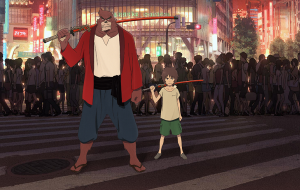Japan
Centaur of Attention
Posted by Mink on Wed 3 Jul 2024 - 01:33Centaurs is a manga series from Ablaze that we recently stumbled across, written and illustrated by Ryo Sumiyoshi. “An epic fantasy adventure set in an alternate medieval Japan, where humans co-exist with the mythic half man/half horse beasts known as centaurs, or “jinba”. The centaur race were long revered as deities in ancient times; however, with the advent of the sengoku (warring states) period, humans started to enslave and use them for military purposes due to their speed, stamina, and ability to communicate in human language. Centaurs living in the plains were rapidly subjugated; in contrast, large numbers of centaurs living deep in the mountains were still free due to their relative isolation.” See what happens when one of them is captured — and now he’s determined to escape back to his mountain home.
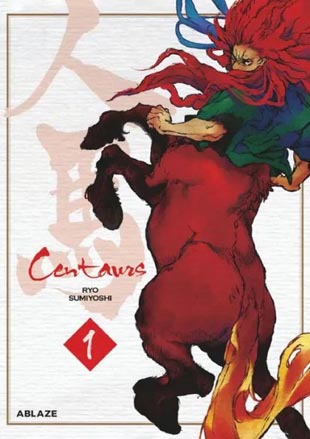
image c. 2024 Ablaze Manga
Review: 'The Boy and the Heron'
Posted by 2cross2affliction on Tue 12 Dec 2023 - 22:15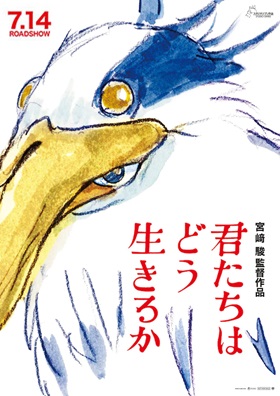 The Boy and the Heron was released earlier in the year in Japan by Studio Ghibli, with no trailer and minimal advertising, the point being made that it is a movie by Hayao Miyazaki from Studio Ghibli. Like, if you know, you know, and if you don't, keep mum because the people who know will judge you. In America, GKIDS is the distributor, and they mostly kept to this same strategy, though as it had already been out in Japan over half the year and had it's Western debut at the Toronto International Film Festival, so they did eventually release a trailer. The film is available in Japanese with English subtitles, or English dubbing; both versions were available at my local cinema, so unless you're situated in a very rural area, it shouldn't be that hard to find your preference. This review is based on the English dubbed version; Ghibli films have traditionally had good English dubbing, and this film is no exception.
The Boy and the Heron was released earlier in the year in Japan by Studio Ghibli, with no trailer and minimal advertising, the point being made that it is a movie by Hayao Miyazaki from Studio Ghibli. Like, if you know, you know, and if you don't, keep mum because the people who know will judge you. In America, GKIDS is the distributor, and they mostly kept to this same strategy, though as it had already been out in Japan over half the year and had it's Western debut at the Toronto International Film Festival, so they did eventually release a trailer. The film is available in Japanese with English subtitles, or English dubbing; both versions were available at my local cinema, so unless you're situated in a very rural area, it shouldn't be that hard to find your preference. This review is based on the English dubbed version; Ghibli films have traditionally had good English dubbing, and this film is no exception.
Japan's 'Killing Stone' split in two, possibly setting powerful evil vixen loose
Posted by 2cross2affliction on Thu 12 May 2022 - 23:12 On March 5 this year, a large stone in the volcanic mountains near the town of Nasu in Japan's Tochigi Prefecture was found to have succumbed to what seems like a normal case of freeze-thaw weathering and split in two. Even setting aside that this occurred over two months ago (though, to be fair, that's a blink in the lifespan of your average rock), such geological processes are hardly news even for mainstream sources, much less a furry news site. But this wasn't just any rock.
On March 5 this year, a large stone in the volcanic mountains near the town of Nasu in Japan's Tochigi Prefecture was found to have succumbed to what seems like a normal case of freeze-thaw weathering and split in two. Even setting aside that this occurred over two months ago (though, to be fair, that's a blink in the lifespan of your average rock), such geological processes are hardly news even for mainstream sources, much less a furry news site. But this wasn't just any rock.
The rock in question was the Sessho-seki (or Killing Stone), the rumored earthly remains of Tamamo-no-Mae, the Jewel Maiden, a legendary nine-tailed fox said to have spread chaos throughout Eastern Asia for nearly 2000 years before finally being hunted down in Nasu. Though finally killed and transformed into the stone, you can't keep a good evil fox spirit down; so her final resting place was obviously haunted by it, poisoning anyone who came near. Though she'd apparently calmed down a bit after an encounter with a Buddhist priest, the stone suddenly breaking in two is a bit ominous.
Delivered On Time — Or Else!
Posted by Mink on Wed 22 May 2019 - 19:04Just got back from Biggest Little Fur Con, and of course we’ve got lots to talk about. But first… Udon Entertainment have released the Samurai Pizza Cats Official Fan Book in North America. What’s that you ask? Well according to Wikipedia, “Kyatto Ninden Teyandee is an anime series produced by Tatsunoko Productions and Sotsu Agency. The series originally aired in Japan on TV Tokyo from February 1, 1990 to February 12, 1991… Saban picked up the North American rights to the series in 1991, and produced an English version called Samurai Pizza Cats.” Honestly, that explanation barely cat-scratches the surface of just how weird and wonderful this series was. Fan interest has not waned over the years, and now there’s a book all about it! “The Samurai Pizza Cats: Official Fan Book is packed with the best toppings: Pinup artwork, character designs and profiles, episode summaries, rough concepts, and exclusive in-depth interviews with the show’s creators and original cast.” Check out the preview over at Comicon.com.
CyberConnect2, creator of 'Solatorobo', is recruiting staff for a new furry game
Posted by togo57 on Fri 20 Apr 2018 - 10:44CyberConnect2, a Japanese video game development studio best known outside the fandom for the .hack and Naruto: Ultimate Ninja series, is recruiting programmers, designers and artists for three new projects in its “Trilogy of Vengeance” as part of its 'Next Plan' strategy.
This trilogy is composed, as its name suggests, of three games themed around vengeance:
- Tokyo Ogre Gate, a high-speed action game about schoolgirls in a historical/fantasy setting.
- Cecile, a gory action game about Gothic Lolita witches trying to kill each other.
- Fuga, an action strategy RPG with the additional themes of “War” and “Animals”.
Fuga will join such games as Solatorobo (Nintendo DS; Flayrah review) and Tail Concerto (PS1) as an instalment in the Little Tail Bronx series, focusing on what happens when children enter the battlefield. Its plot features eleven orphans, crewing a tank with a soul-fueled cannon – fighting the fascist Berman Empire, which attacked their village and imprisoned their parents.
Kemono Friends - Finding ones identity among animal friends
Posted by Fred on Tue 29 Aug 2017 - 20:00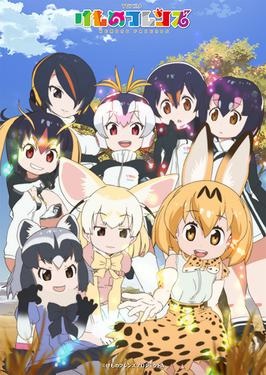 “Kemono Friends” (けものフレンズ) began in Japan in 2015 as a mobile game. A manga was serialized in “Monthly Shōnen Ace” (one of Japan’s “telephone book”-sized comics magazines) from May 2015 to March 2017, and a 12-episode anime TV series was broadcast from January 10 to March 28, 2017 on Wednesdays. Sequels are currently in production.
“Kemono Friends” (けものフレンズ) began in Japan in 2015 as a mobile game. A manga was serialized in “Monthly Shōnen Ace” (one of Japan’s “telephone book”-sized comics magazines) from May 2015 to March 2017, and a 12-episode anime TV series was broadcast from January 10 to March 28, 2017 on Wednesdays. Sequels are currently in production.
The plot is that Japari Park is a huge island zoo of real, extinct, and mythological animals. A mysterious substance, Sandstar, turns all the young female animals into “Friends”, Japanese cute girls about 10 to 12 years old with furry ears and tails. Kaban is a girl who wakes up in Japari Park with no memory of who she is or how she got there. Her first friend is Serval, a girl with serval ears & tail, who names her Kaban (bag) because of her backpack. Other characters they meet include Raccoon, Fennec, Alpaca, Crested Ibis, Jaguar, Beaver, Prairie Dog, Moose, Gray Wolf, and others. Lucky Beast, a mysterious robot rabbit, seems to be in charge. Kaban is helped by Serval and Fennec through the Park to learn who she really is.
Everyone expects “Kemono Friends” (in English, “Animal Friends”) to come to American TV and DVD soon. But for now, if you like Japanese animal girls (ears and tails only) of more species than just cats, dogs, and bunnies, then you can watch “Kemono Friends” on Steam's gaming service, or Crunchy Roll.
"Monkey is Back" - The rise of an Eastern legend
Posted by Fred on Thu 9 Mar 2017 - 15:44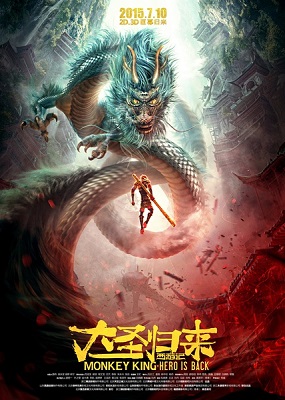 If you were around in 1961, you may have seen an obscure animated feature titled Alakazam the Great, about three friendly monsters – Son Goku (monkey), Sir Quigley Brokenbottom (Pigsy), and Sandy – escorting Prince Amat from China to India.
If you were around in 1961, you may have seen an obscure animated feature titled Alakazam the Great, about three friendly monsters – Son Goku (monkey), Sir Quigley Brokenbottom (Pigsy), and Sandy – escorting Prince Amat from China to India.
This was part of the first wave of Japanese animated films, known as anime, to enter the United States. The other two features in that wave were Panda and the Magic Serpent and Magic Boy. They were box-office failures at the time, and because of this the anime film genre is still fighting to enter the American theatrical market.
Alakazam the Great was also America’s first cinematic introduction to the ancient Chinese story Journey to the West or Monkey King, as it is better know in America. This legend is over a thousand years old in the oral form. It was written into a novel, probably by the scholar Wu Cheng’en in the 16th century. The first Oriental animated feature, the Chinese Princess Iron Fan (1940), is an adaptation of part of Journey to the West. Alakazam the Great, more specifically, is a movie adaptation of Osamu Tezuka’s 1952-59 My Son Goku manga version of Journey to the West.
Coming in August to Japan: 'Rudolph and Ippaiattena' ... and Godzilla?
Posted by Fred on Sat 16 Apr 2016 - 04:22Toho Films has just released an aw-it’s-cute trailer for its August 6 CGI theatrical feature adaptation of author Hiroshi Saitō’s children’s book Rudolph and Ippaiattena. But Toho has also added a mention of one of its other big summer releases, Godzilla: Resurgence. Japan still has theatrical monopolies, so these features released by Toho Films will only play in the Toho Cinemas theatrical chain.
Anime News Network has news on the film’s voice actors, Saitō’s original children’s book series, and a translation of the trailer’s text.
Review: 'The Boy and the Beast', anime film
Posted by dronon on Sat 26 Mar 2016 - 05:28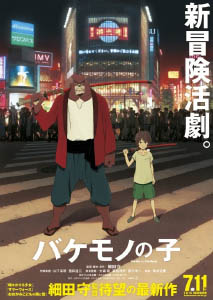 The Boy and the Beast (aka Bakemono no ko – English trailer) is a 2015 animated film from Japanese director Mamoru Hosoda, who directed the film Wolf Children in 2012. Both are of furry interest; this one even more so!
The Boy and the Beast (aka Bakemono no ko – English trailer) is a 2015 animated film from Japanese director Mamoru Hosoda, who directed the film Wolf Children in 2012. Both are of furry interest; this one even more so!
Ren is a 9-year-old boy who runs away to the busy streets of Tokyo after his mother dies. He has no way of contacting his father, whom his mother divorced, and has no love for his mother's relatives who want to take him in. Angry and upset, he wanders by accident into a parallel Earth, the beast world, where everyone is an anthropomorphic animal.
In the city of beasts, the current Grand Master (a rabbit) intends to transcend and reincarnate into a god, with two possible successors: a bear named Kumatetsu, or a boar named Yozen.
Two more anthropomorphic animated features
Posted by Fred on Wed 27 Jan 2016 - 00:10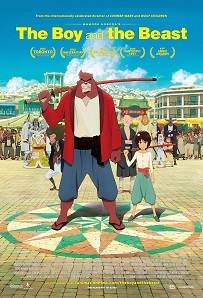 The Cartoon Brew website has just announced two new animated features with anthropomorphic animals coming later this year.
The Cartoon Brew website has just announced two new animated features with anthropomorphic animals coming later this year.
Last year’s Japanese cartoon animation The Boy and the Beast (Bakemono no Ko), directed by Mamoru Hosoda, will be released on March 4 “in selected theatres” by Funimation, in both subtitled and dubbed versions. It’s about a Japanese homeless boy, Kyuta, who goes into “the beast world” and becomes the apprentice of Kumatetsu (“Iron Bear”), a martial arts warrior. Tickets will go on sale on the Funimation site on February 5. The Cartoon Brew announcement includes the new American theatrical poster.
'Blazing Saddles' + animation = 'Blazing Samurai'
Posted by Fred on Thu 12 Nov 2015 - 22:35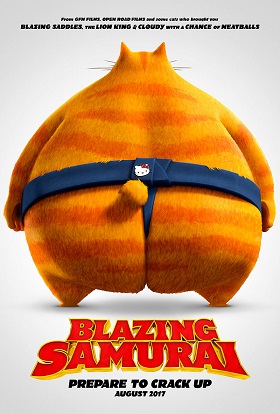 Can a massive theatrical animated hodgepodge make a massive theatrical animated anthropomorphic hit? That’s what a lot of people are hoping when Blazing Samurai, an animated pastiche of the 1974 Mel Brooks comedy Blazing Saddles, only with samurai in Old Japan instead of cowboys in the Old West and animated cats and dogs instead of humans, hits the theaters in August 2017.
Can a massive theatrical animated hodgepodge make a massive theatrical animated anthropomorphic hit? That’s what a lot of people are hoping when Blazing Samurai, an animated pastiche of the 1974 Mel Brooks comedy Blazing Saddles, only with samurai in Old Japan instead of cowboys in the Old West and animated cats and dogs instead of humans, hits the theaters in August 2017.
How much of a hodgepodge is it? Blazing Samurai is announced as the first feature produced by former Sony Pictures Vice Chairman Yair Landau’s Mass Animation online company, founded in August 2008 to “develop wikimovies and content using a new production model – a virtual animation studio and an open invitation to artists around the world to collaborate in creating the next generation of animated stories.” Mass Animation has attracted “over 58,000 participants from 101 countries”, and has produced the 5-minute “Live Music”, advertised as “the first ever theatrically released crowdsourced animated film”.
It's anthropomorphic, but do you have $91,000 to spare?
Posted by Fred on Sun 25 Oct 2015 - 17:15The File 770 science fiction fandom website reported on October 17 that the top-end Takashimaya Tokyo department store is selling a solid gold statuette of Baltan, a giant space lobster-man villain from the Ultraman TV series, for the yen equivalent of $91,000. A Japanese news video shows solid gold statuettes of Ultraman himself, plus other Ultraman space villains such as Bogleech.
Ultraman, a 40-foot-tall superhero from outer space, appeared on Japanese TV for 39 weekly half-hour episodes from July 17, 1966 to April 9, 1967. It was produced by Tsuburaya Productions, the company of Eiji Tsuburaya, the creator of Gojira (Godzilla) in 1954, and was meant to be for Japanese TV what Godzilla was for Japanese movies. It succeeded wildly.
Doggy derring-do to get big-screen debut
Posted by Huskyteer on Wed 17 Jun 2015 - 16:19Adding to the list of upcoming anthropomorphic animal movies, a feature film version of 1980s cartoon Dogtanian and the Three Muskehounds was announced at the Annecy Film Festival on June 15.
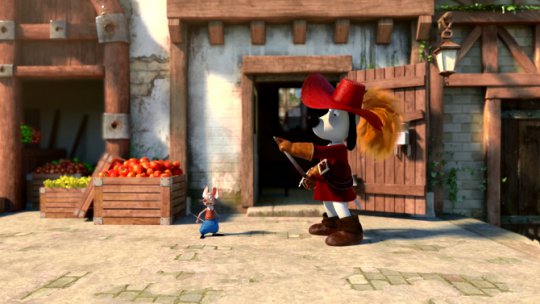
As the title suggests, Dogtanian was an adaptation of The Three Musketeers, with dogs in the roles of d'Artagnan and his friends. Your humble reporter surely cannot have been the only nascent furry to be stirred by the portrayal of Aramis, one of literature's great lovers, as a Springer Spaniel.
The Boy and the Beast
Posted by Mink on Mon 20 Apr 2015 - 01:58Can’t think of a better title than that, so why try? Several places on the Net (including Flayrah) have already made note recently of The Boy and the Beast. It’s the latest anime feature from Hosoda Mamoru, the man who brought us Summer Wars and The Wolf Children. As you can tell from those works, the man has an interest in anthropomorphic characters — and this new one just may be his most furry feature yet! The Boy and the Beast “… tells the story of a lonely young boy who strays into a parallel world inhabited by supernatural creatures, where a bear-like beastman becomes his companion and mentor.” It’s set to premier in Japan this July. No word yet on any planned release in North America, but most of director Mamoru’s works have made it over here eventually. Check out the article over at Twitch Film — it includes a trailer with subtitles.
Newly published: Fred Patten's 'Funny Animals and More'
Posted by Fred on Tue 8 Apr 2014 - 06:26 Funny Animals and More: From Anime to Zoomorphics, based on Fred Patten’s weekly columns from Jerry Beck’s Cartoon Research animation website, was published March 26 by Theme Park Press. It is available in paperback and digital formats, and on Amazon.com.
Funny Animals and More: From Anime to Zoomorphics, based on Fred Patten’s weekly columns from Jerry Beck’s Cartoon Research animation website, was published March 26 by Theme Park Press. It is available in paperback and digital formats, and on Amazon.com.
The book is about animation and comic books rather than specifically anthropomorphic animals, but cartoon and CGI funny animals are a major theme. Topics include anime cat girls; Pokémon and Monster Rancher; Astro Boy and Atomcat; how a popular 1970s anime TV series led to the import of thousands of baby North American raccoons into Japan as pets, whose descendants are ruining thousand-year-old Buddhist and Shinto shrines today; animated Summer Olympics mascots like Misha the bear cub, Sam the eagle, Hodori the tiger, and Cobi the sheepdog, from 1972 to 2012; Patten’s favorite childhood comic-book funny animals like Amster the Hamster, Doodles Duck and his nephew Lemuel, Nutsy Squirrel, Dunbar Dodo, and SuperKatt, and how he would still like to see them animated; Crusader Rabbit; rats in animation; Reynard the Fox in animation; and Disney’s forthcoming 2016 Zootopia.
